ARCHIPELAGO – FOUR RESIDENCIES, A THOUSAND EXPERIENCES
10.04.2021 — 31.12.2021
Frac Grand Large — Hauts-de-France
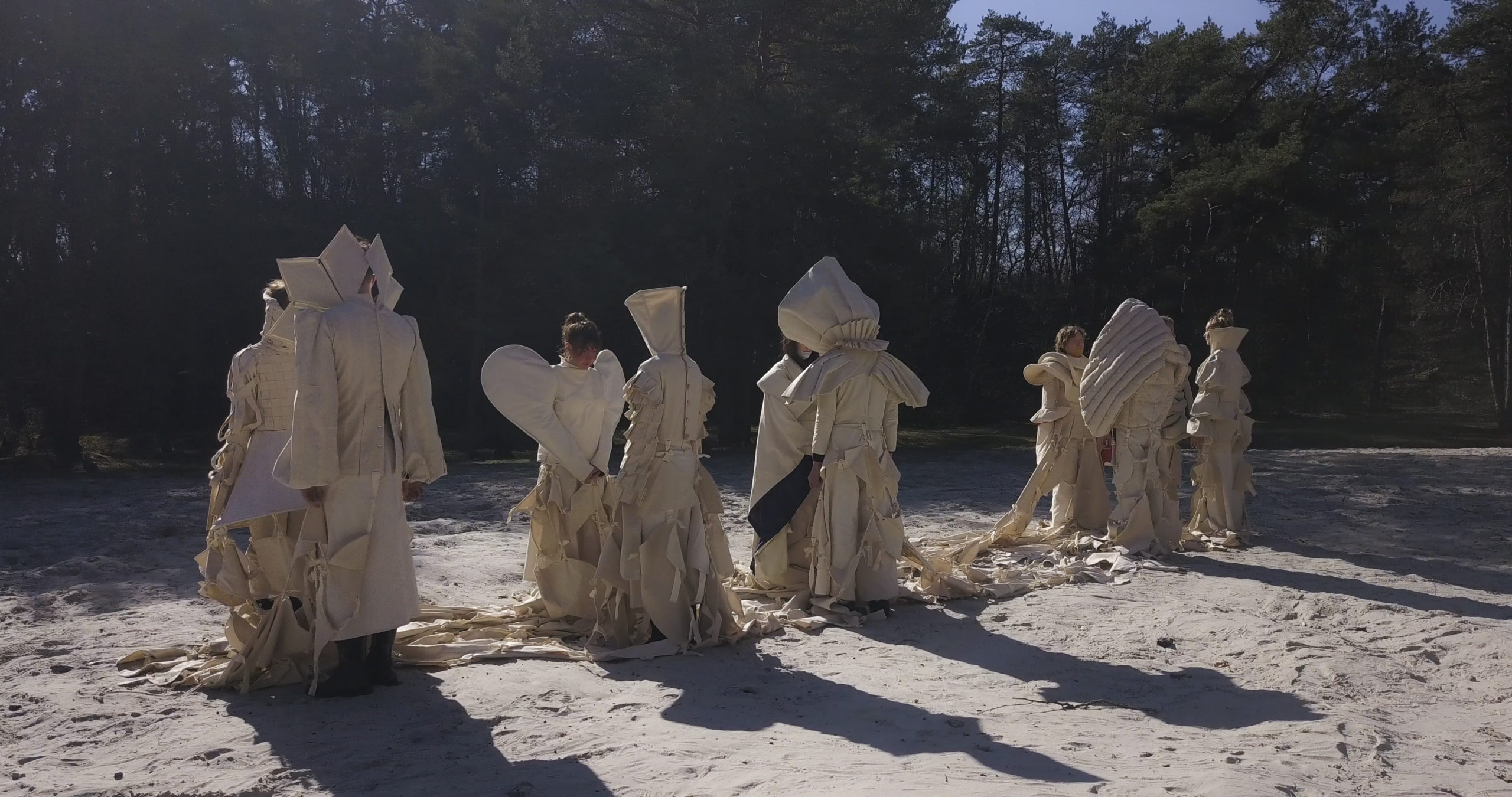
Jean-Julien Ney – Nefeli Papadimouli –
Maxime Testu – Florence Bazin, Corine Caulier, Gilles Elie, Galerie Rezeda, Mélissa Godbille, David Gommez, Lucie Herlemont, Rébecca Konforti, Marion Lebbe, David Leleu, Philippe Lipka Michael Lilin, ÉLISA MASSON, Emmanuel Simon, Manon Thirriot, Julien Verhaghe
Archipelago is a residency programme designed in collaboration with the art schools in Boulogne-sur-Mer, Calais, Denain and Lille, with the support of the Drac Hauts-de-France and the Pas de Calais department.
“[Archipelagos] These sorts of diversities in spatial expansions, which nevertheless rally coastlines andmarry horizons.” (Edouard Glissant, Treatise on the Whole World, 1993).
This residency allowed them to pursue their artistic exploration through readings, sound and visual recordings, object collection, handling, welding, sewing, engraving and numerous conversations. They took on a new working environment, experimented with new techniques and involved other artists, students, instructors and residents in their artistic processes.
The fruits of these new experiences are presented in the exhibition at the Frac Grand Large which puts their different perspectives and tendencies on display. This exhibition also takes place in an unprecedented context, one of lock-down, distancing, remote work and at times even illness. These circumstances have deeply modified the conditions under which the artists produced; they equally impact how their works will be experienced by visitors forcibly masked , their bodies constrained and their movements even more scrutinised. And although this exhibition crosses different universes, it brings us back to our own bodies and desires to see, feel, and welcome irreducible and contemporaneous visions.
JEAN-JULIEN NEY
“The world of Jean-Julien Ney is one of objects: strange machines that you look at without understanding, around which you circle as if they contained their own, sealed-off world. […] The purpose is to infer a gap between reality and the machine’s interpretation, which provides its own vision of shapes, of what is real.”
Anne-Sarah Bénichou, text 64th Salon de Montrouge
Jean-Julien Ney initially studied set design at the Pavillon Bosio in Monaco before completing his degree in 2014 at the École nationale supérieure des beaux-arts in Lyon. His inclination for positioning objects within a space is revealed in his exhibitions where, plane after plane, new vantage points emerge, intertwining inside and outside. “I’m interested in tools that build images, for these devices have the ability to distance, to defer materiality through images.” Consequently, he engages with analogue and virtual technologies, stripping the machines and coded languages of that which interferes with what is real. The Archipelago residency provided the artist the opportunity to continue his exploration by associating students from the local art schools and the FabLab in Calais with his quest for materials to be recycled.
The presented works use modular structures made of profiled aluminium as a frame. They combine stripped optical instruments, printing tools or visual and sound recording tools that have become more or less obsolete as well as coloured filters. Originally presented in Boulogne and Calais, these unique objects, hybrids between technicality and dismembered corporal functions, have been adapted to the context in Dunkirk. Positioned in relation to one another within the exhibition space, they seem to indicate an impossible space between the eye and the hand, the body and space, outlining an “archaeology of the future”.
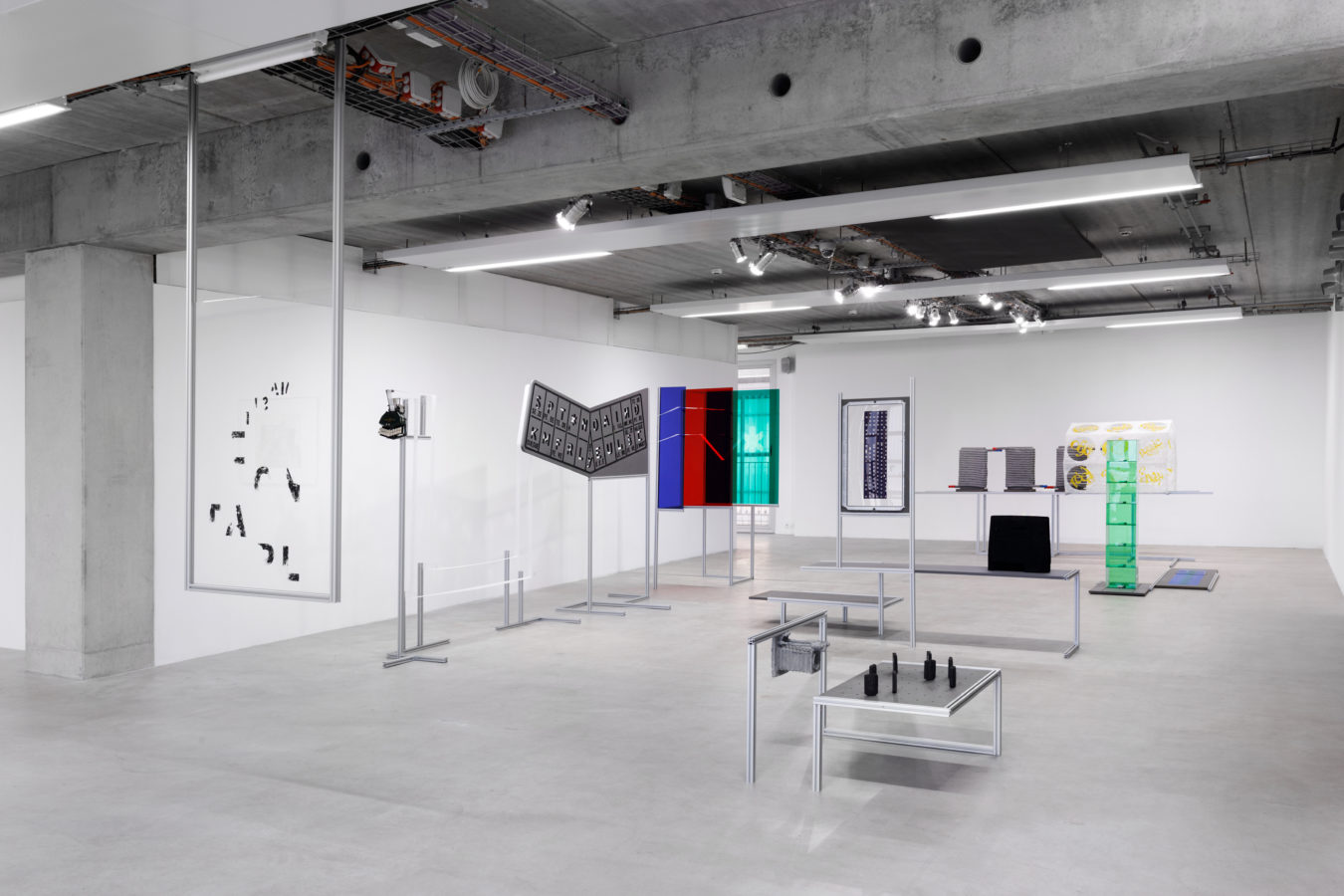
NEFELI PAPADIMOULI
Originally from Greece where she studied architecture, Nefeli Papadimouli graduated in 2016 from the École nationale supérieure des beaux-arts in Paris. Her interest in habitat is located in the extension of the body; she explores the spaces “between”, which she shapes by taking the negative imprint of the void that separates two bodies. Shapes-objects are then produced from plywood, painted in different colours and placed at the visitor’s disposal for measurement against their own body.
During her residency in Boulogne-sur-Mer and Calais, her work shifted to more flexible materials and environments: fabric, leather, burlap and fibreglass before it hardens. In Boulogne-sur-Mer, the artist stretched threads throughout the exhibition space, creating a joyful entanglement that enthralled the visitor all the while forcing them to move about with utmost caution. In Calais, the artist installed a sewing workshop where she assembled fragments of leather into huge hats that connected together at the rims to form a collective headdress. Thwarting norms and conventions, the artist also shaped enormous burlap bags, the scale of which alludes to the body. With a mix of organic materials and a patchwork of colours, the exhibition displayed forms and shapes at rest.
At the Frac Grand Large, a proliferate amalgam of various pockets assembled together make up a dozen pieces of connected clothing. A video presents this gigantic costume worn collectively by performers who wander in a forested area. Their movements put into play the tension of their bodies and the perpetual transformation of the relational landscape.
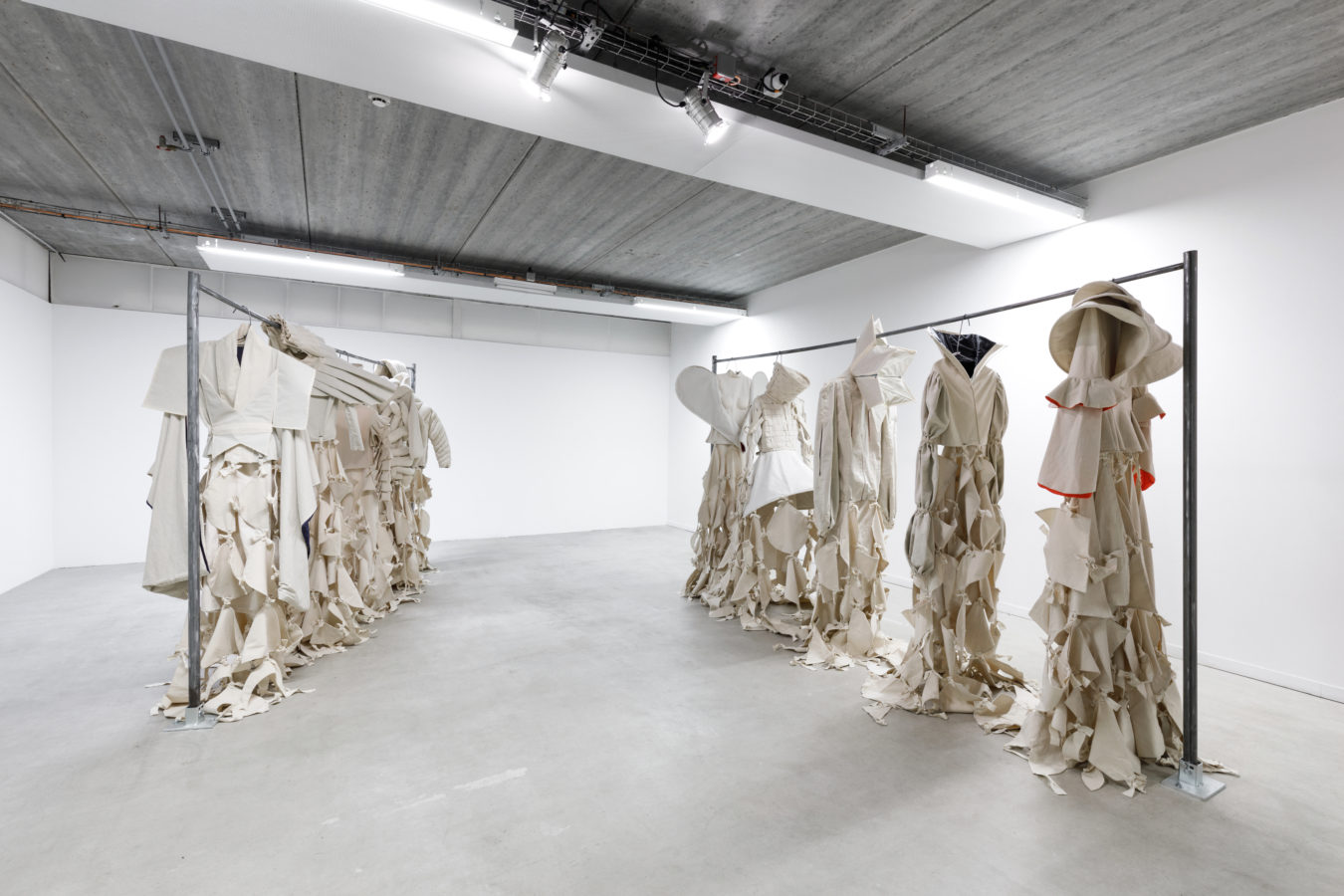
MAXIME TESTU
Following his studies at the École nationale supérieure des beaux-arts in Lyon (2014) and HEAD – Genève (2016), Maxime Testu co-founded alongside other artists an online literature platform called “Romaine” to investigate the sidelines of artistic production; he thus examined the sources of artistic inspiration, the places where art is produced and where reverie takes place as well as the precariousness of the material conditions of artistic production. This introspection nourishes his art, ridiculing the myths that surround the figure of the artist. Between fantasy and reality, Maxime Testu exploits this figure as the basis for drawings, collages and sculptures which mix references to art history, underground cultures and the media.
The works produced here are in a continuum with his Autoportrait au chignon (Self-Portrait with a Bun – 2019), a set of collages that combine fragments tainted with dark romanticism, as depicted by Odilon Redon or Nick Cave. Other works take on a more humoristic note, vacillating between derision and cynicism. Artists as Dogs (2019) is a series of portrait panels of dogs with expressions that implore our attention, jostling the roles between artist and viewer.
During his residency in Lille and Denain, Maxime Testu tried his hand at etching for the series titled Schnorrer (2019-2020), a metaphor of the artist as a vagabond. The etched vignettes depict a dilettante skeleton, evoking the artist struggling with day-to-day life. As underlined by the art critic Indira Béraud, the figure of the skeleton expresses “the symptoms of a new generation, […] that faces morbid catastrophes neither with great resignation nor great resilience.”* A solitary melancholy dissolves into grotesque situations or attributes.
Asserting himself as an amateur artist allows him to dapple in a large palette of creative techniques. In contrast to his etchings, Maxime Testu also presents his more recent, pop and surrealism inspired, acrylic paintings. The artist depicts hands that fail to grasp digital devices, tablets or smartphones. Piercing through these objects, these hands reveal a reality that seems to liquefy and loose consistency. The artist follows through on his critical view of consumables that have taken place on our digital screens and which have genuinely become the artificial limbs of our relationships with others and the past.
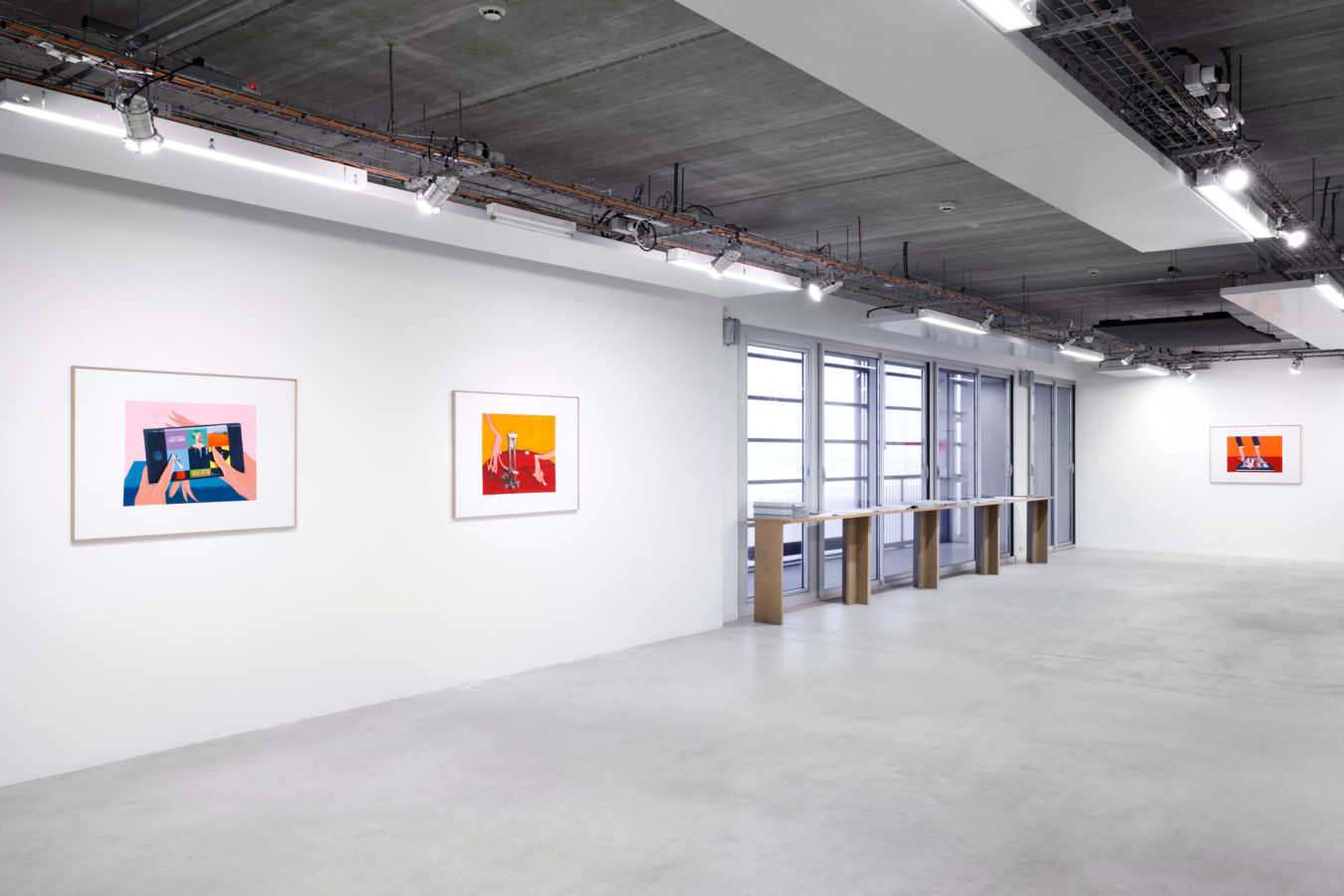
FLORENCE BAZIN, CORINE CAULIER, GILLES ELIE, GALERIE REZEDA, MELISSA GODBILLE, DAVID GOMMEZ, LUCIE HERLEMONT, REBECCA KONFORTI, MARION LEBBE, DAVID LELEU, PHILIPPE LIPKA, MICHAEL LILIN, ÉLISA MASSON, EMMANUEL SIMON, MANON THIRRIOT, JULIEN VERHAEGHE
“My authority dissolves and I waive the exclusive paternity of my work when my personal exhibitions become collective or when our works become collaborative.“Emmanuel Simon
As a painter with a degree from the Institut supérieur des arts in Toulouse, 2014, Emmanuel Simon relates his artistic approach to a foundational experience from 2011 in which he decided to paint the others “in the process of painting” during an exploration workshop. From this performance he developed different “strategies” to circumvent the issues linked to depiction such as format, technique or time spent painting.
Straight out of school, his practice took an experimental approach through collaboration in which he invites artists to partake in his canvasses and to try out forms of co-creation. His interest in the collective thus took shape, as did the need to develop solidarity with his peers. Invited to the Biennale in Mulhouse in 2015, he in turn took the initiative to invite three artists. Since then, each of his exhibitions has challenged the themes of collectivity, processes of inclusion, delegation, short-circuits and mises en abyme.
In 2019, via his Archipelago residency, he took an interest in amateur art in which learning through copying and the renunciation of the choice of subject are echoed in his own technique. First in Denain, then in Lille, he formed ad-hoc groups of students and artists. Principles of cooperation, borrowing and discussion provide contemplation on the topic of authority/authorism, which are reflected in the text by Véronique Goudinoux in the Archipelago residency catalogue and in the exhibitions “(H)all over 17 – Archipel #2” in Lille and “Mayonnaise” in Denain.
Most of the artists involved in this project wanted to further their collaborative experience in Dunkirk, questioning the possibilities of producing in a context shared with others. They agreed on producing a magazine, which would allow visitors to flip through the works as well as to take a copy with them. This choice fosters the intimate experience linked to touch and vision. And, within this new islet, each page deploys its singularity; this format is also an object of a common irresolution that encourages sharing.
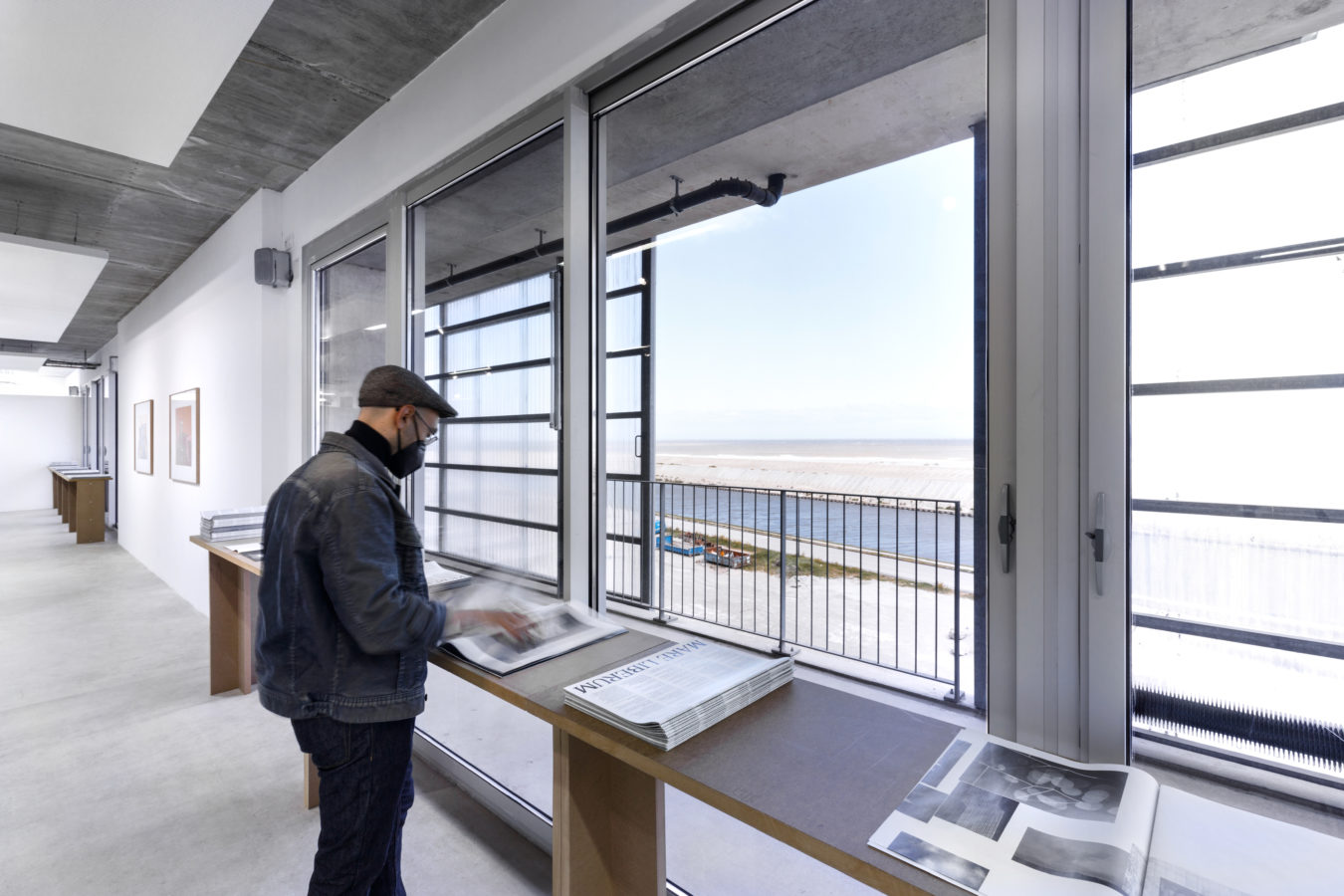
Coédition : Frac Grand Large — Hauts-de-France, Le Concept – École d’art du Calaisis, EMA / École Municipale d’Art de Boulogne-sur-Mer, École d’arts plastiques municipale de Denain_Espace VillAr(t)s et Centre d’Arts Plastiques et Visuels de Lille. Texts : Jean-Christophe Arcos, Indira Béraud, Véronique Goudinoux, Julie Pellegrin
Graphism : Mélanie Berger
Date(s)
10.04.2021 — 31.12.2021